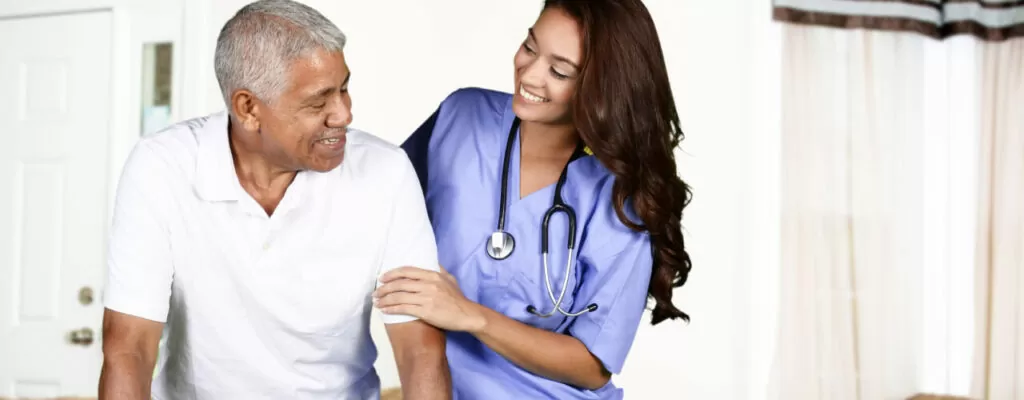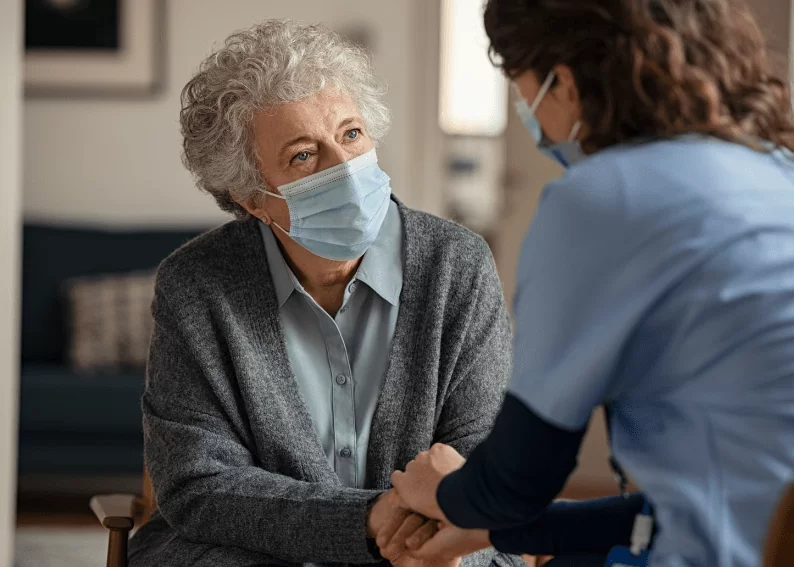Ready to Find Natural Pain Relief Without the Side Effects of Medication?
In today’s world, pain is a major issue. An estimated one out of every five Americans suffers from chronic pain, with 8% of those suffering from pain so severe that they are unable to carry out their daily activities. It’s no surprise, then, that painkillers and anti-inflammatory medications have become a multibillion-dollar industry.
Unfortunately, these medications come with their own set of issues, ranging from addiction to potentially fatal effects on internal organs. Many people are looking for pain relief that doesn’t come in the form of pills. If you’re one of those people, you should be aware of our in-home physical therapy services’ incredible pain-relieving capabilities.
Physical therapists can help individuals manage pain, and greater use of physical therapy could make a real impact on the tragic levels of drug abuse in this country—abuse that often begins with a prescription for pain medication.”
So, instead of turning to opioids, consider physical therapy first, all from the comfort and convenience of your home!
Choosing physical therapy for your pain management needs over medications
Physical therapy offers numerous advantages as a safe, effective, all-natural pain management tool.
The APTA website states that“The White House has announced that APTA is among the organizations that have joined a public-private partnership to combat opioid usage and prescription drug abuse, and that the association will reach out to the public and its members to deliver the message that pain can be effectively managed through conservative, non-drug approaches.
Our in-home physical therapists take each individual’s symptoms (and those symptoms’ underlying causes) into account when devising a physical therapy plan for pain management. Your plan might include modalities such as:
- Massage therapy to boost circulation, relax tissues, and reduce inflammation
- Resistance training exercises to strengthen muscles, making physical actions less of a strain
- A soothing combination of heat therapy and cryotherapy
- Chiropractic adjustment to help joints move more freely and correct painful musculoskeletal imbalances
- Aerobic exercises to get the blood flowing and encourage joint lubrication
Physical therapy appears to have one more major contribution to make toward freeing pain sufferers from their symptoms.
Some physical therapists have adopted “brain-rewiring” techniques such as graded motor imagery to help patients develop a new perception of their pain – one that allows them to master and minimize their responses to it. Brain-rewiring is a form of physical therapy that our in-home physical therapists use to give individuals more control over their pain so that they can tolerate more exercise. In turn, this reduces the pain even more.
Better yet, you’re going beyond the temporary numbing of your symptoms by actually treating the underlying causes of those symptoms. Why settle for the illusion of relief when you can have the real thing – and improve your health and functionality in the process?
Did you know?
Opioids are the most commonly used medication for pain management across the United States. Even though they are commonplace, they contain some shockingly harmful facts:
- Opioids are a highly addictive substance and are the most commonly abused prescription medication.
- Opioids are a highly dangerous class of substances. Heroin is among the opioid category, as well as prescription pain relievers like oxycodone, hydrocodone, morphine, and more.
- More than 2 million people in the United States become addicted to pain medication every year, many of the medications being opioids.
- About a quarter of heroin addicts began their addiction through prescription opioid dependency.
The true problem with painkillers
A number of over-the-counter and prescription drugs claim to temporarily relieve pain and inflammation. For people suffering from debilitating autoimmune conditions, steroids do this by suppressing the immune system (such as rheumatoid arthritis).
However, the same immune-suppressing capacity makes the body more susceptible to infection. Cataracts, glaucoma, hypertension, water retention, acne, elevated blood sugar, and osteoporosis have all been linked to long-term steroid use. Non-steroidal anti-inflammatory drugs (NSAIDs) prevent the body from producing inflammatory chemicals.
These drugs aren’t necessarily safe, either. NSAIDs can cause stomach bleeding and kidney damage in some individuals. They have also been associated with elevated heart attack and stroke risks.
Opioid medications pose perhaps the most serious threat. Opioids are capable of numbing more than just pain. In 2017, these potent medications resulted in over 70,000 fatal overdoses. While some of the deaths may have been caused by recreational drug use, more than 60% of those who died were chronic pain sufferers.
Physical therapy can do more than just help you feel better. By providing you with non-pharmaceutical pain control measures, this form of care can help you steer clear of the side effects of prescription and non-prescription drugs.
Kick the pills today and call our physical therapy office
If you’re tired of depending on pain medication to get relief, know that there is a better option available to you. Call our clinic for more information on our in-home therapy services!
One of our in-home physical therapists will be happy to create a pain management program just for you, that you can complete at home, at your own convenience. Contact Holistic Physical Therapy today for a consultation!
Tags: Natural Treatment, Natural Pain Relief, Aches and Pains, Chronic Pain, physical therapy, physical therapists, nutrition, physical activity, opioids, Rehabilitation, physical health, Joint pain


